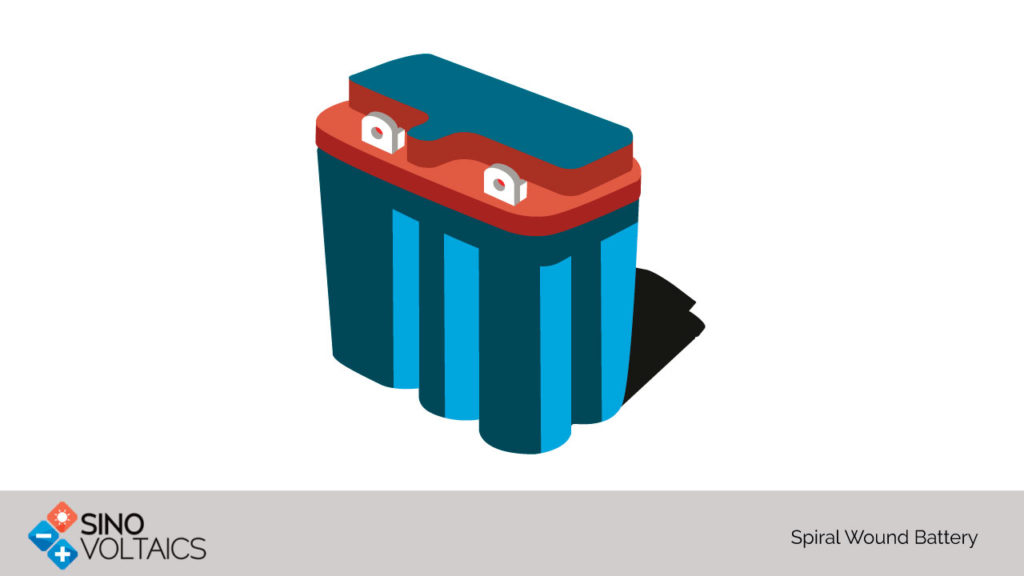Spiral Wound Batteries
“Why did not someone think of it earlier? It is so simple!”. Such a thought must have come to your mind when you realized that you had been unnecessarily running after complicated solutions. The same happens to a person who studies the spiral wound battery first time. The principle is so simple. Wind the plates tightly in a spiral to increase the effective plate area. Just like in capacitors. The second surprise will come when one learns that the idea of a spiral wound battery was actually conceived very early. Gaston Planté was the first person, as early as 1859, to make a battery cell of two lead sheets rolled into a concentric spiral and separated by strips of rubber. [Wikipedia].
The Basic Battery: A battery consists of a number of galvanic cells connected in series to achieve the desired voltage. The common lead-acid battery nominally offering 12 V has six lead acid cells in series.
The Cell: Each cell in a battery will consist of two electrode plates-the positive plate and the negative plate with the space in between being filled by an electrolyte. The plates are held mechanically separate from each other so that they do not ‘short’ with each other. Through different chemical reactions taking place between the electrolyte and each plate, a positive charge accumulates on one plate and an equal and negative charge on the other. The former becomes the positive plate or anode and the other one is the negative plate or the cathode. When an external ‘load’ is connected between the positive terminal and the negative terminal positive charge flows from the positive terminal through the load to the negative terminal. An equal current must flow inside the battery through the electrolyte to compensate for the external charge flow.
Getting High Currents: The current flow in the external circuit depends on the open circuit voltage of the battery and the net resistance in the closed path of a circuit. This includes the resistance of the external circuit in series with the internal resistance of the cells in the battery. The internal resistance is not a physical but effective resistance offered to the separation and flow of ions through the electrolytes from plate to plate. It depends on the state of charge, the temperature, the separation between the plates, and very importantly, the area of the plates facing each other, somewhat like in a capacitor. A greater plate area provides a wider area and thus reduces internal resistance. An increase in plate area will also help increase the capacity.
Increasing the Plate Area:
• The plates of the conventional lead-acid battery are planar and lie parallel to each other separated by the electrolyte. For a given volume of the casing, there is a limit to the plate area. The spiral wound battery uses the cell volume much more effectively. The plates are not planar, but the plate pair, with a soft solid separator in between, is formed into a spiral. The plates are thinner and tightly packed, and hence, can provide maximum surface area.
• The separator is an absorbent glass mat that holds the electrolyte in an absorbed form. This is called the Absorbent Glass Mat (AGM). The spiral wound battery is thus a subclass of the AG battery because the absorbent glass mat could also be used between planar plates. The porosity of the mat permits hydrogen and oxygen gas diffusion and recombination to water without the formation of bubbles as in the case of flooded batteries. This reduces water loss and the need for adding water.
Cell Layout: The tubular form cells can be laid out in the battery container in multiple forms, most often they are parallel to each other in two rows of three each.
Characteristics of a Spiral Wound Battery:
• Low internal resistance allows high current on demand
• Deep Cycling Capability
• No spill because the electrolyte is absorbed in the glass mat
• Long Life
• Faster charging than flooded types
• Maintenance Free (Low maintenance)
• Less likely to develop sulfation
• Low self-discharge
• Better than flooded batteries in cold weather
• Lighter weight than flooded types
• Sensitive to overcharge: 2.4 V per cell is OK for charging, float charge being reduced to between 2.25 and 2.3 volts
• Sensitive to high temperature: Charging should be interrupted if core temperature crosses beyond about 49°C
• More expensive than flooded and gel types

